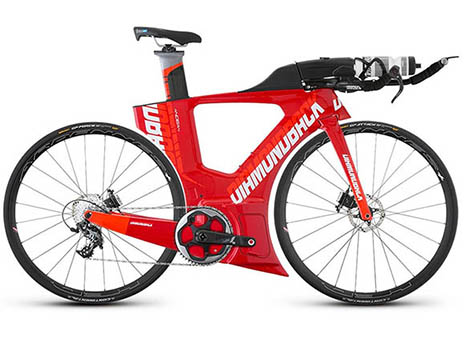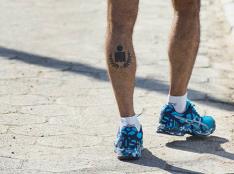If you've been bitten by the triathlon bug, chances are you'll want to go long and race your first half- and full-distance IM at some point. If this year is the year, here are a few tips to get you there.
Train Every Day
1 of 5
It takes a minimum of 13 hours of training per week to get in shape for an IRONMAN race. That means you'll be training almost every day of the week. After all, you not only have to swim, bike and run during the race, but you have to beat the cutoff times. Participants in competing in the half or full IRONMAN events will be pulled from the course if they're unable to finish each leg of the event in the set amount of time. So, get ready to spend some serious time in the pool, on the bike and in your running shoes.
Find:
Your Next TriathlonDon't Fake It
2 of 5
To some small extent, you can fake the training for both an IRONMAN and half-distance race. In other words, you can finish both of these race distances without completely putting in the time to train, but you'll hate the race.
There are few things more miserable in life than spending 17 hours on an IRONMAN course, hating every painful swim stroke, bike pedal and running step. Sure, there are amateur athletes who've finished without putting in the hard work, but they just spent over $500 on the entry for a day of self-inflicted pain.
Find:
Your Next TriathlonThe Fourth IRONMAN Discipline
3 of 5
You probably know that a triathlon of any length consists of a swim, bike and run, but to succeed at the half and full distance you'll have to learn a fourth discipline: nutrition. Unlike the sprint or Olympic distance triathlon, the half and full IM becomes about how fast you can swim, bike and run, and just as importantly, how you can take in enough calories to keep from bonking. Unless you are a pro, it will take at least 10 hours to complete an IRONMAN. In that time, it will be impossible for you to take in more calories than you'll burn.
The human body just isn't designed to take in more than several hundred calories per hour during intense exercise, while at the same time burning four of five times that amount. The trick is to figure out how your body reacts to prolonged stress and how to best compensate for this intense and long exercise without bonking. A successful IRONMAN triathlete has spent considerable time honing their nutrition regimen prior to a race. And as odd as it may sound, when you step up to the longer distance races be prepared to feel sick. Gastrointestinal discomfort is common in athletes participating in the IM distance.
Find:
Your Next TriathlonAvoid Injury
4 of 5
It's the No. 1 secret to moving from shorter triathlons to the half or full IRONMAN distance. That means staying healthy and injury-free throughout your training. Unfortunately, the long IRONMAN training hours required to prepare for the event make it difficult to stay injury free. It's all too easy and common to blow out a shoulder swimming in the pool, or develop a case of plantar fasciitis while ramping up for the marathon. Bike accidents are always a constant danger.
An amateur triathlete who wants to attempt an IRONMAN should find a coach or online IRONMAN training plan and stick with it. Coaches or training plans help minimize the risk of injury and fatigue. It may cost more in the short term, but when compared to the cost of surgery it is money well spent.






Discuss This Article